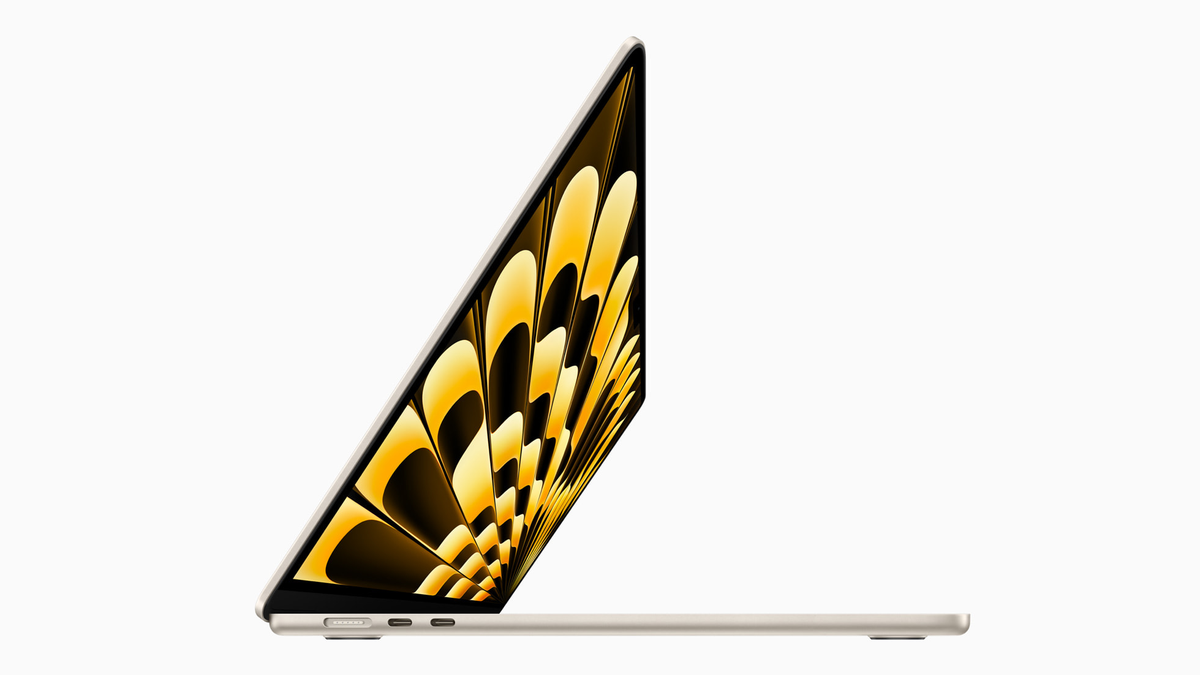When to Buy the 14-Inch MacBook Pro Over the 15-Inch MacBook Air
Until now, if you wanted to buy a MacBook with a 15-inch screen, you had to go for the $2,500 16-inch model, filled with features and power that most regular users would never need. No longer: After years of...

Until now, if you wanted to buy a MacBook with a 15-inch screen, you had to go for the $2,500 16-inch model, filled with features and power that most regular users would never need. No longer: After years of rumors and speculation, Apple finally made a 15-inch MacBook Air. Hallelujah.
At first glance, it seems like a sweet deal. Heck, it might even seem like Apple made the laptop you’ve been waiting for for years. A 15-inch version of the laptop we all already love? Heck yes. But sadly, it’s not as simple as that. While the 15-inch Air is certainly a great machine, if you’re in the market for a new large-screen MacBook, you should seriously consider the 14-inch MacBook Pro instead. You might even save money in the process.
An oversized MacBook Air
It might be called an Air, but the 15-inch version isn’t that lightweight. The 15-inch Air weighs 3.3 pounds, while the 13-inch model is 2.7 pounds. This is hardly ultra-lightweight laptop material: Windows notebooks, like the 14-inch LG Gram, weigh just 2.2 pounds.
The 15-inch MacBook Air is also virtually identical to the 13-inch version. The screen is the same (just larger, of course) with up to 500 nits at 224 PPI. You get the base level M2 chip with an 8-core CPU and 10-core GPU. Apple has increased the trackpad size (this is a larger machine, after all) and added a six-speaker setup, but reviewers have pointed out they don’t match up to the 14-inch Pro. And while you do get MagSafe charging, you’re still stuck with two USB-C ports, and a chip that can’t drive multiple displays.
The MacBook Pro is a better experience for many

Image: Apple
If you want the best overall Mac experience, you’ll like the MacBook Pro. Yes, the sticker price is $2,000, but you can find the M2 Pro model on sale for $1,799 if you look hard enough. If you’re OK going the refurbished route—which you totally should—you can snag an M1 Pro model for even less. (More on that later.)
This MacBook Pro has a 14.2 inch display, while the Air has a 15.3 inch display. While it doesn’t quite reach that 15-inch sweet spot, it’s pretty darn close, and in real-life you might not notice the difference as much. (You may want to visit an Apple Store before deciding.) Plus, the screen is a hell of a lot better. You have an XDR display with dynamic refresh rate (up to 120 Hz), with up to 1,000 nits of sustained brightness and up to 1,600 nits with HDR content. Bring your sunglasses.
Plus, you get more ports, including an HDMI and SD card slot. The former was only ever available on MacBook Pros in the past, but the SD card slot was available on older MacBook Airs until Apple detoured into USB-C-only for a while there. In addition, the Thunderbolt 4 USB ports will let you drive multiple displays together if you wish. The MacBook Pro’s speaker system is also quite good. They have a high-fidelity six-speaker sound system with force-canceling woofers and stereo sound.
Performance wise, the MacBook Pro is a beast—frankly, it’s an overkill for most everyday tasks. But what that extra power gets you is future-proofing. Even a base MacBook Pro with an M1 Pro or M2 Pro chip will run smoothly for years, as they both start at 16GB of RAM and 512GB of storage, and have more cores than the M2 chip in the Air. And, unlike the Air, the Pro series laptops have active cooling with fans, so the chips won’t throttle as quickly. Many tasks in 2023 won’t be too taxing on any M-series chip from Apple, but once software gets more advanced and starts challenging these chips more and more, the machines with active cooling will have the advantage, as will the Pro chips with extra power to begin with.
The true price of a good MacBook Air is $1,799
The base model 15-inch MacBook Air is not exactly under powered, but it is under-equipped, shipping with only 8GB of RAM and 256GB of storage space. That just isn’t enough in 2023. Sure, you can get away with the 8GB RAM for now if all you’re doing is light work, but unless you’re diligent with your storage management, you’ll eat right through that 256GB. Plus, that 8GB of RAM will catch up to you as the years go by.
This wouldn’t be a big problem if Apple didn’t charge so much for upgrades. Each step up that upgrade ladder costs an additional $200: Want to bump the RAM from 8GB to 16GB RAM? That’s $200. Want to boost your storage to 512GB? That’s another $200. Those two upgrades alone take the price to $1,799.
Are you starting to see it? At the same (or less) rate, the MacBook Pro has a much better screen, much faster processor, and the same 16GB of RAM and 512GB storage, all in a package that’s only slightly heavier, with a slightly smaller screen.
Only the base MacBook Air makes sense
With this in mind, the upgrade costs to the MacBook Air are just not the value they should be. That doesn’t mean the Air is a bad purchase, or that you shouldn’t buy it. If you need a larger display, and you don’t care about extras like a better screen, better speakers, or the extra storage space and power, buy the MacBook Air. Even if you do go for the MacBook Air, make sure you don’t pay the sticker price of $1,299. The model is frequently discounted on online retailers like Amazon and Best Buy, and you will always get $100 off going through Apple’s online education store.
For everyone else, if you can, we would recommend you stretch your dollar to buy the 14-inch MacBook Pro. You might not even have to stretch: The base 14-inch MacBook Pro with M1 Pro routinely goes for around $1,550 on Amazon. If you buy it refurbished, you can get it for around $1,350. A refurbished 2023 MacBook Pro with M2 Pro can be yours for just over $1,700.
Our recommendations:
14-inch M1 Pro MacBook Pro (Refurbished)14-inch M2 Pro MacBook Pro (Refurbished)15-inch M2 MacBook Air (16GB RAM/512GB storage)If you only need a solid MacBook for the best possible price:
15-inch M2 MacBook Air (8GB RAM/256GB storage)
 Fransebas
Fransebas 
































